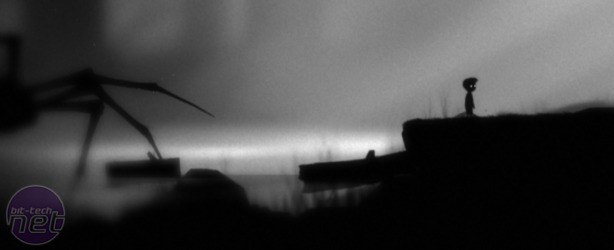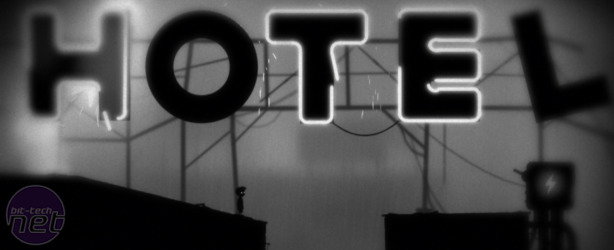Limbo PC Review
Publisher: PlaydeadPlatform : PC (also on Xbox 360)
UK Price (as reviewed): £6.99 inc. VAT
US Price (as reviewed): $9.99 exc. Tax
Sometimes games make it hard to see what makes them work, what makes them affect us. More often than not, games are sensory overload. Limbo is everything but.
Simply put, Limbo is an indie 2D-puzzle platformer with an artsy black and white aesthetic about a boy who walks, jumps and skips from left to right trying to evade deadly dangers while solving puzzles involving crates and levers. In other words: a simple description of Limbo will only sound like half of all the indie games out there. But it wouldn’t do it justice.
Limbo, originally released for Xbox last year by Danish developer Playdead, stands in the tradition of the cinematic platformer, which is just a fancy way of saying that it’s a game about a vulnerable protagonist who dies. A lot. Your task is thus to find out when and how the little boy will get himself killed, which you do by dying, and then avoid that when you respawn. It’s a refreshing take on platforming, if only because it is influenced less by Super Mario Bros., Metroid and Contra and more by Another World or Heart of Darkness.
As a PC-port Limbo is not especially impressive, though not a failure as such. The keyboard controls are functional, but mapped to the arrow buttons and not customizable, which makes moving around and especially jumping while climbing a rope (both mapped to the up-arrow) clunky. Using an Xbox-Pad greatly improves the feel of the game. Limbo seemingly doesn’t want its players to care about “all the technical stuff” in the background – and is all the more annoying for people who do. But it’s a small annoyance for a game considering the game itself is only two or three hours long.
More interesting than button mapping though, are the things that are deliberately stripped from Limbo and the effect they have on the experience. Besides the title there's no traditional storytelling, no dialogue, no music, no tutorial or hints, no colour beyond soft black and muted white. Even the menu will only pop up if you ever manage to break away from the game via ESC.
It's telling that this iceberg-technique approach has inspired a lot of writing on Limbo dealing with what is not there, even to the extent that let Mark Cullinane conclude that 'videogame journalism [is] stuck in the teenage years' due to the endless debate whether the protagonist in Limbo is dead, a time traveller, or his own twin brother. In a way, this is a bit like discussing the end of, say, Inception: besides the point.
The point being: Limbo manages to strip away the clutter and show how little things can trigger profound emotions. This is a game about loneliness with a protagonist isolated from any other being that doesn’t want him dead, and even those fade away after a time leaving behind... nothing. Only the soundscape plays constant companion to the little adventuring boy and it's this which creates the most differing shades of loneliness in Limbo's monochrome world: the loneliness of crickets and the soft sound of the moss under your feet, the loneliness of flickering neon lights and of rusty old machines kicking into gear.
Yes, Limbo channels the poems of our inner teenagers about being misunderstood and lonely, but it does so bravely and beautifully, and it is a better game for it; a game that should not be missed.

-
Overall90 / 100


MSI MPG Velox 100R Chassis Review
October 14 2021 | 15:04












Want to comment? Please log in.